The W Silicon Valley in Newark, California gets no respect. While birds may flock, the people don’t when it comes to hotel life in this southeast portion of San Francisco Bay. Guest complaints are not focused on the rooms. The standard rooms are large for a W Hotel. The hotel has an outdoor pool, free parking, a BBQ pit, games and books in the lobby, dark lighting, and constant music. But the East Bay location between a tech business park and a wildlife refuge in the salt marsh of the southern end of San Francisco Bay, 25 miles from the W San Francisco, gives it a reputation for being in the middle of nowhere.
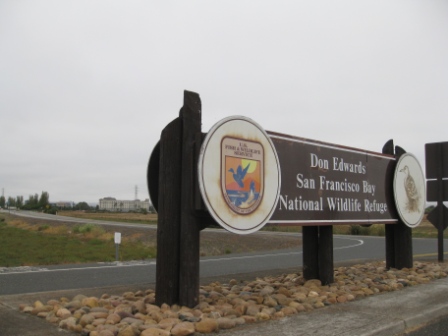
I have stayed here every year since 2003. This is the cheapest W Hotel in the brand. Rates lately have dropped as low as $79 for Friday and Saturday nights. Back in 2003 and 2004 rates were frequently only $59 per night on weekends and rose to $109 in 2007-2008 before the latest room rate collapse. The hotel’s location in a corporate business park means weeknight rates are much more expensive with average rates still between $139 and $200 per night.

The lobby design and room amenities will seem familiar to hotel guests who have frequented W Hotels. The TV in guest rooms is still 20th century. No flat screens here. The presence of a microwave and sink sort of make up for the retro TV. And there is a DVD player with a library of selections available from the front desk.
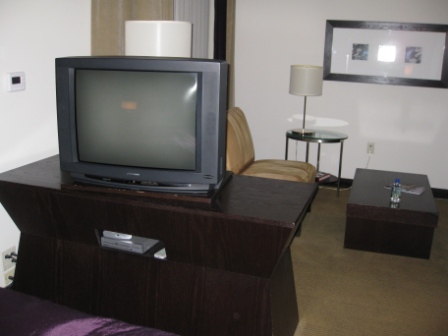
The pool is outdoors and can be lively at times.
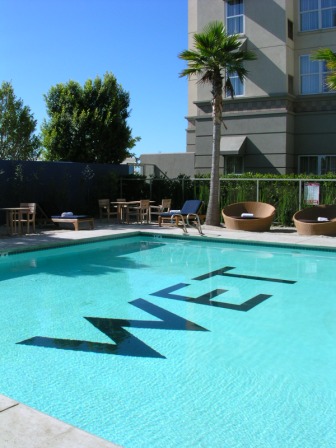
The restaurant and bar are much less lively most of the time. The main difference between this W Hotel and most other W Hotels is a lack of spark among the clientele visiting the hotel. (Perhaps I’m just being introspective.) The W San Francisco is a cosmopolitan happening place with people dropping into the bar to hang out for the ambience. W Silicon Valley clientele is techs on business and families or couples booking a nice hotel in a cheap East Bay location. “I’ll stay in tonight and watch TV dear.”
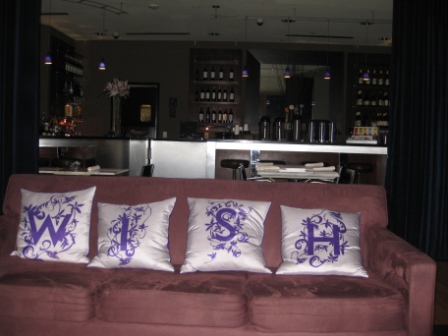
The workout room is small, but I have never seen it overly crowded.
The feature of the hotel that gets the bulk of complaints is its location. All food eateries are a couple of miles east in the shopping district of the city of Newark. A car is essential for this hotel, or at least a bicycle.
The aspect of the hotel that I want to focus on and rarely see referenced in hotel reviews for the W Silicon Valley is its location adjacent to the San Francisco Bay Wildlife Refuge. The preferred view for the W Silicon Valley looks west to the San Francisco Bay and tidal marshlands. The area between the hotel and the hill a mile west used to be salt crystallizer ponds as recently as the 1970s.

If you have flown over San Francisco Bay and seen the large squares of different colored water near the land’s edge of the southern San Francisco Bay, you may have wondered, What kind of water pollution problem is happening?” These large ponds of water enclosed by levees and dikes are actually salt crystallizer ponds where water is evaporated and sea salt harvested. There are still a dozen square miles of salt ponds operated by Cargill Salt.

Salt harvesting was practiced by the local indigenous people at the time of the Gold Rush. Salt ponds were a naturally occurring phenomenon in the San Francisco Bay prior to the Gold Rush years of the 1850s. Winter rains established large ponds in the marshland called “salinas”. The six month dry season from May to October in coastal California meant the salinas naturally dried in the summer heat and left sea salt deposits.
Salt harvesting has been a lucrative business in the San Francisco Bay area for 150 years when industrious businessmen realized there were better fortunes to be earned through harvesting sea salt rather than gold prospecting. By the turn of the 20th century the entire marshland of the southern San Francisco Bay had been reshaped into large levee-enclosed salt ponds and the ecosystem was dramatically changed for the Bay as levees and dikes prevented tidal surge into the estuaries. The marshes disappeared over decades.
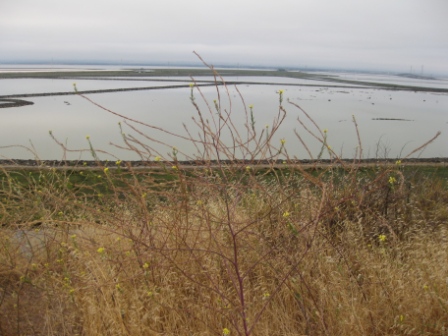
The past 30 years has witnessed a concerted effort to reestablish the southern San Francisco Bay wetlands from salt crystallizer ponds to marshlands. This is bird land. The southern San Francisco Bay is an important location on the shorebirds Pacific flyway. Over one million shorebirds pass by or nest here every year. The Don Edwards San Francisco Bay Wildlife Refuge has a visitor center a mile west of the W Silicon Valley hotel. There are trails to walk in the marsh and along the bay front. Colorful patches of red, white, and green water are visible in parts of the refuge where active salt crystallizer ponds are still present.
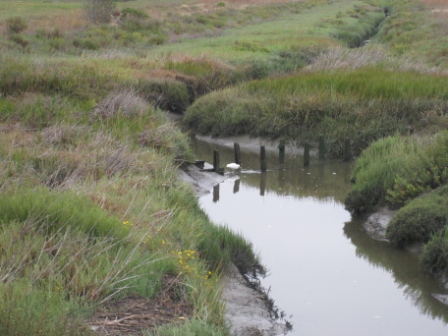
The San Francisco Bay landscape is changing once again. And the W Hotel Silicon Valley is on the front lines of this urban restoration project.
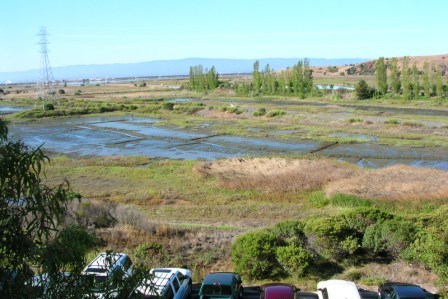
Educational resource San Francisco Bay Restoration links:
http://www.southbayrestoration.org/FAQ.html
Cargill Salt San Francisco Bay: http://www.cargill.com/static/sb/
Hey parents – here is an excellent source for a school project on SF Bay restoration and ways to get involved: http://www.southbayrestoration.org/pdf_files/BayNature%20Oct%202004.pdf



2 Comments
Comments are closed.